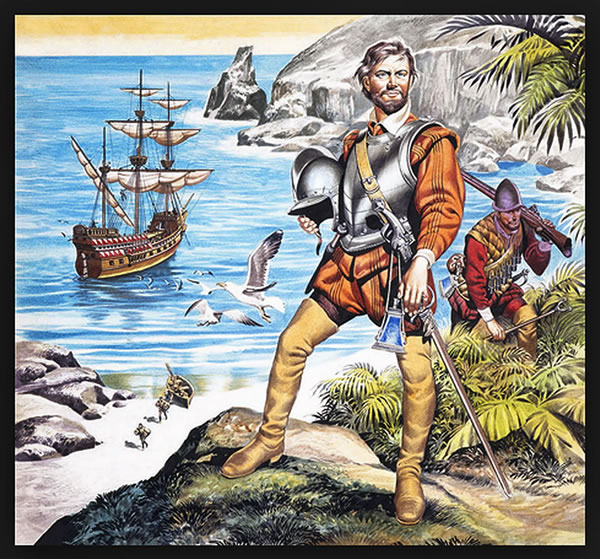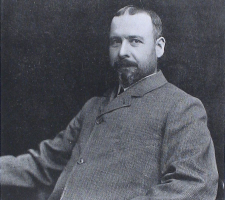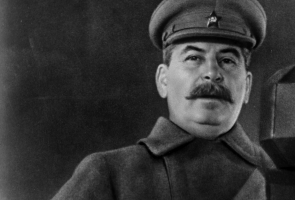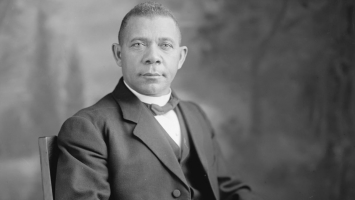Top 7 Interesting Facts about Ferdinand Magellan
The Maluku Islands in present-day Indonesia were teeming with nutmeg, cloves, and mace when Portuguese explorer Ferdinand Magellan (1480–1521) set sail in ... read more...pursuit of a westward path there. The first successful round-the-world expedition would result from Magellan's visit to these "Spice Islands," making him a legendary figure. To know more detail about this man, let's follow Toplist to discover some interesting facts about Ferdinand Magellan
-
Before he was a sea captain and conquered the vast Pacific Ocean, he conquered the Indian Ocean, he fought in the military, and joined a Portuguese war fleet of 22 ships bound for India in March 1505. He received his first taste of the sea when he was only 25 years old. During this period, he learned the basics of sailing and navigation.
Ferdinand's life was not without incident, as he took part in crucial naval battles in support of Portugal's dominance of the worldwide trade between the East and the West. In 1506, he fought against the Indian ruler in the Battle of Cannanore, and in 1509, he fought in the Battle of Diu.
He was also a member of the ship fleet that sailed to Malacca, Malaysia today, where he played a crucial role in alerting the commander of incoming Malays. In 1511, he took part in the Portuguese general Afonso de Albuquerque's capture of Malacca.

Photo: historyextra 
Photo: discoverwalks -
One of the interesting facts about Ferdinand Magellan is before coming to the city-state of Morocco, Ferdinand had a successful military career, which had a significant impact on his life. In the August 1513 combat in Morocco, he not only damaged his leg, leaving him with a persistent limp for the rest of his life. Later, he was accused of unethical behavior and illegally trading with the Moors, which caused him to lose favor with King Manuel I.
With his reputation sullied, he struggled to find work when he returned home. On three occasions, the monarch rejected Ferdinand's plan to locate a new maritime passage to Maluku, the spice hub of modern-day Indonesia. Ferdinand, fed up with the king's continual arguing, left Portugal for Spain, landing in Seville on October 20, 1517. Because Ferdinand had switched his allegiance to Portugal's fiercest enemy, Spain, Portugal deemed this act treasonous, he was considered a traitor. He never came back to Portugal. He married, had two children, and arranged the expedition in Seville. Magellan was chosen admiral of the Spanish Fleet and granted command of the expedition, the five-ship Armada of Molucca, in 1518 for his commitment to the Hispanic Monarchy. He was also named Commander of the Order of Santiago, the Spanish Empire's highest military award.

Photo: discoverwalks 
Photo: discoverwalks -
In order to present Charles I, the 18-year-old Spanish monarch, with the idea of finding a westward sailing path to the Spice Islands, Ferdinand requested an appointment with him upon his arrival in Spain. In March 1518, King Charles I granted the request, citing a pressing need for a new commercial route to the Spice Islands. Portugal was given sovereignty of the eastern routes to Asia that circumnavigated Africa, notably the Cape of Good Hope, under the terms of the 1494 Treaty of Tordesillas. Instead, Magellan suggested taking a western path, which had never been done before, to the Spice Islands. Charles approved the trip and provided the majority of the finance in the hopes that it would result in a trade route that was advantageous to Spain commercially.
Five ships made comprised Magellan's fleet, which contained enough provisions for a two-year journey. The crew was made up of roughly 270 men of various nationalities, while researchers' estimates may be lower due to conflicting information in the numerous documents that are still in existence. Around 60% of the team was made up of Spaniards who came from all throughout Castile. Portuguese and Italian came in second and third, with 28 and 27 sailors, respectively. The crew was then made up of 15 sailors from France, 8 from Greece, 5 from Flanders, 3 from Germany, 2 from Ireland, 1 from England, and 1 from Malaysia. On September 20, 1519, the fleet departed from Spain.

Photo: discoverwalks 
Photo: quora -
Magellan went to tremendous lengths to baptize every native population he came across in Christianity, even though it was never a formal part of his mission. The most eminent instance was in the Philippines in April 1521 when he baptized King Humabon of Cebu together with thousands of his subjects. This Draconian order ultimately led to Magellan's demise because his religious zeal was so intense that he threatened to kill chieftains who refused to accept Christianity. Magellan's soldiers burnt the town of Lapu-Lapu on the island of Mactan after the ruler refused to accept Christianity.
Later, Magellan returned to Mactan with 49 soldiers and commanded Lapu-Lapu to submit to his rule. Magellan was murdered in the next combat after being speared, then repeatedly stabbed by the islanders' cutlasses and scimitars, because the king had refused. Every April 27, the Battle of Mactan is reenacted in the Philippines, where Magellan is remembered as a despot rather than a hero. Lapu-Lapu is portrayed by a well-known Filipino actor.

Photo: flickr 
Photo: biography -
Although the Portuguese explorer Ferdinand Magellan is frequently acknowledged as the first person to have traveled around the world, the truth of his voyage is a little more nuanced. In an epic quest to discover a western path to the spice-rich East Indies in present-day Indonesia, Magellan set sail for the first time in September 1519. He successfully commanded his crew as they crossed the Atlantic, navigated a channel in southern South America, and across the huge width of the Pacific, but he was fatally wounded in a confrontation with locals on the Philippine island of Mactan only halfway around the circuit. Although Magellan's passing prevented him from personally completing the world's circumference, his mission went on without him. One of his ships made a successful round-the-world voyage in September 1522 and safely returned to Spain. Only 18 of the 260 original crew members had made it through the dangerous three-year trek.
Enrique, the captain's personal slave who had been traveling with him since a previous trip to Malacca in 1511, was one of the most crucial crew members on Magellan's expedition. Although there are many schools of thought, many historians agree that Enrique was the first person to actually circumnavigate the earth. Enrique was taken from Malacca by Magellan during a previous expedition to the East Indies in 1511, and the Malay later served as the expedition's interpreter in the Pacific islands. Enrique had almost circled the globe and returned to his home country by the time the mission reached Southeast Asia, albeit over the course of several years and multiple voyages. Enrique had previously traveled west with Magellan from Asia to Europe before joining the voyage across the Atlantic and Pacific. Shortly after Magellan's passing in the Philippines, Enrique halted the expedition and vanished. He had traveled only a few hundred kilometers from Malacca, his starting point, at that point. Magellan's slave may have been the first person to truly circumnavigate the globe, if he ever made it back to his native country. This is so one of the interesting facts about Ferdinand Magellan that surprised many people.
Photo: pixels 
Photo: meettheearth -
The Pacific Ocean, the Atlantic Ocean, and the Indian Ocean are the three largest oceans in the world. The Pacific Ocean is by far the largest. Magellan was given a mission by Spain in 1519 to discover a new maritime passage to the Maluku Islands, often known as the Spice Islands (Indonesia). With a fleet of five ships and 265 men, he headed out, but only three of the ships were able to navigate the choppy Atlantic Ocean currents. In 1520, Magellan and his crew entered the tranquil seas of the Pacific Ocean after sailing over the very choppy Cape Horn. Although many called the sea of Magellan for many years, he gave it the name Pacfico, which subsequently became "Pacific". Only 18 of the starving men made it to the end of the trip because Magellan and his troops failed to account for the size of the Pacific Ocean.
From the Antarctic region in the Southern Hemisphere to the Arctic region in the North, the Pacific Ocean is completely enclosed. Asia and Australia are to the west, and the Americas are to the east. It holds roughly half of the free water that is available on our planet and has an area of 59 million square miles. All the planet's landmasses can fit within the Pacific basin, which the Pacific Ocean takes up nearly a third of the planet's surface. Thus, the Pacific Ocean is roughly twice as large as the Atlantic Ocean.
Photo: istock 
Photo: trafo.hypotheses -
Only 18 men remained from the expedition's original crew of roughly 260 when the lone vessel Victoria returned to Spain in September 1522. It took 58 years before another expedition successfully circumnavigated the globe, since doing so finally proved to be a Herculean task and the Magellan mission's success was so implausible. This second voyage around the world, which was captained by the English navigator Sir Francis Drake, set sail in 1577 and essentially followed Magellan's itinerary.
Francis Drake was dispatched by Elizabeth I in 1577 to begin an expedition against the Spanish along the Pacific coast of the Americas. In November 1577, Drake sailed from Plymouth, England, on the Pelican, which he later changed to the Golden Hind. The Drake Passage, as it is now known, was traversed by the ship in September 1578 as it traveled south of Tierra del Fuego, South America's southernmost tip. Drakes Bay, California, also known as Alta California, is where Drake made his first landing in June 1579. It was north of Spain's most northern claim. In September 1580, Drake finished his circumnavigation of the globe and made history by becoming the first captain to do it. Drake's fleet was similarly decimated by the lengthy voyage, as was Magellan's armada, and only his flagship Golden Hind was left when he reached England in 1580.

Photo: rmg.co 
Photo: goldenhind




























